Learning the Alphabet of Fertility Acronyms
Check out this guide on the different fertility acronyms and terms you may come across during your journey to parenthood.

Entering the world of trying to conceive is like learning a new language—literally. There are so many terms, abbreviations, and acronyms that it is easy to feel like you don’t know what anyone is saying. Between doctor visits, online support forums, and even chatting with others who are “TTC” (that’s Trying to Conceive), it can be alienating to feel like you don’t speak the language. Using donor sperm or ART (Assisted Reproductive Technology) to TTC opens up a whole world of options for choice and testing—all of which have associated acronyms, so here’s a glossary of basic terms to help get you started.

2WW: Two week wait
The amount of time, post-insemination, that it takes most bodies to move through the luteal phase of the menstrual cycle, which means two weeks is the amount of time to wait before finding out whether an insemination has resulted in pregnancy or not.

AI: Artificial insemination
Inserting sperm into the reproductive tract (the vagina, cervix, or fallopian tube, depending on the method used). AI can take place in a doctor’s office, or at home using donor sperm.

ART: Assisted reproductive technology
The term for fertility procedures in which eggs or embryos are handled (like IVF, ICSI, and cryopreservation of embryos, aka egg freezing).

BBT: Basal body temperature
A biometric (body temperature taken first thing in the morning before getting out of bed) that is often tracked to help someone who is TTC predict when their body will be ovulating. Ovulation typically occurs with a spike in BBT.
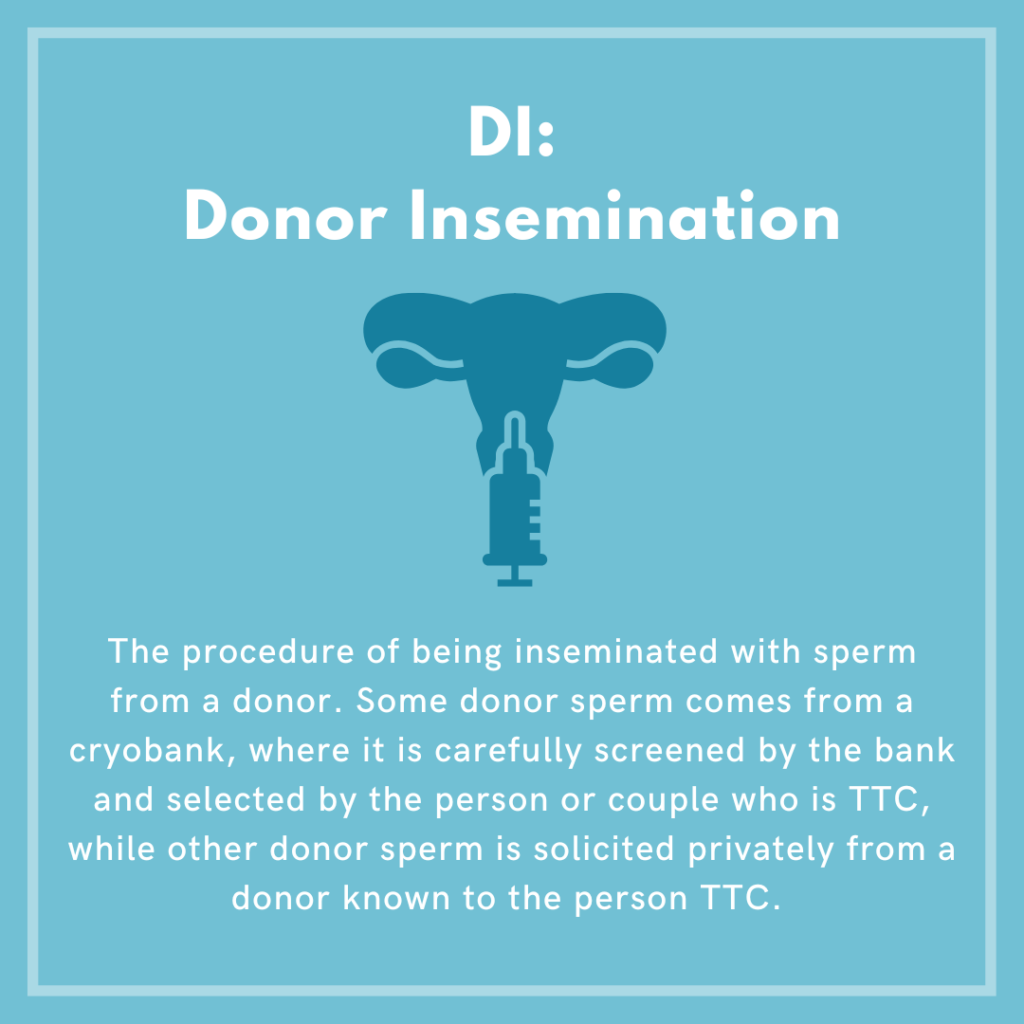
DI: Donor insemination
The procedure of being inseminated with sperm from a donor. Some donor sperm comes from a cryobank, where it is carefully screened by the bank and selected by the person or couple who is TTC, while other donor sperm is solicited privately from a donor known to the person TTC.
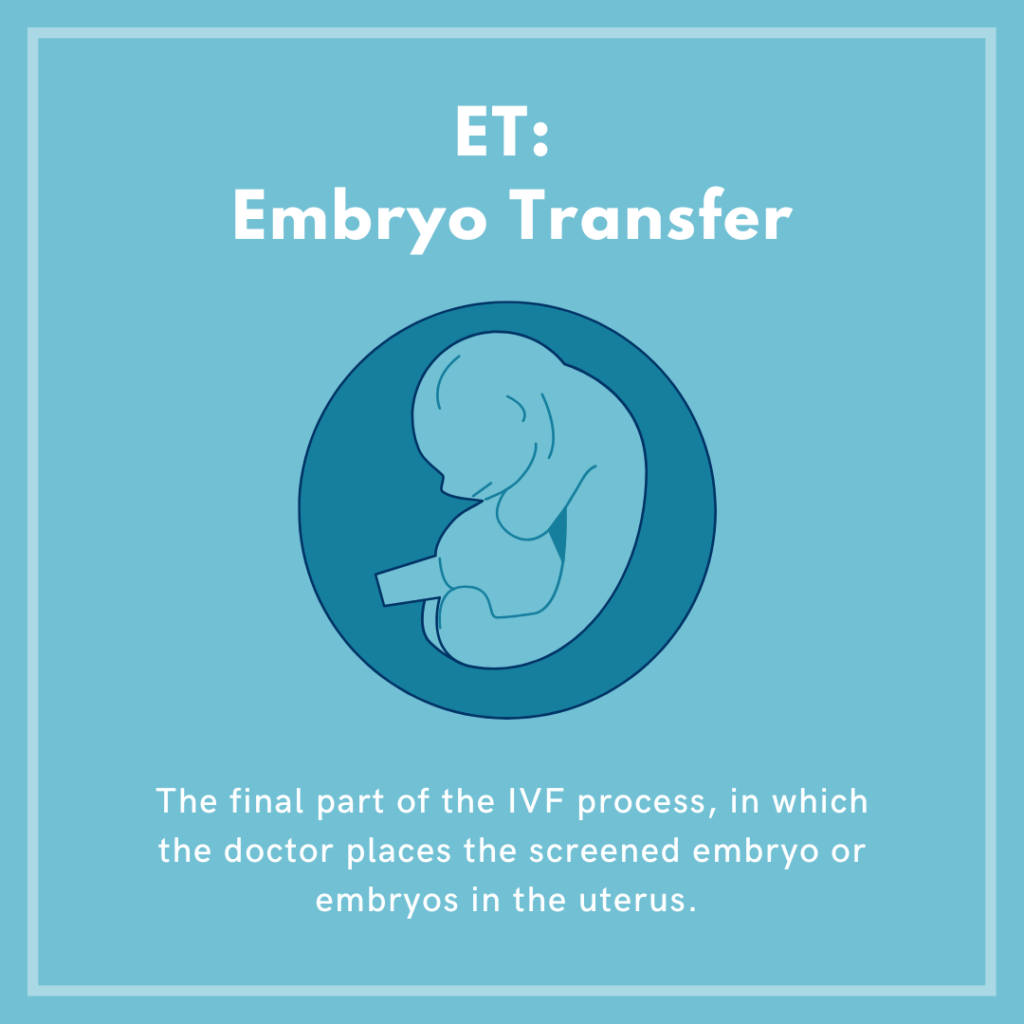
ET: Embryo transfer
The final part of the IVF process, in which the doctor places the screened embryo or embryos in the uterus.
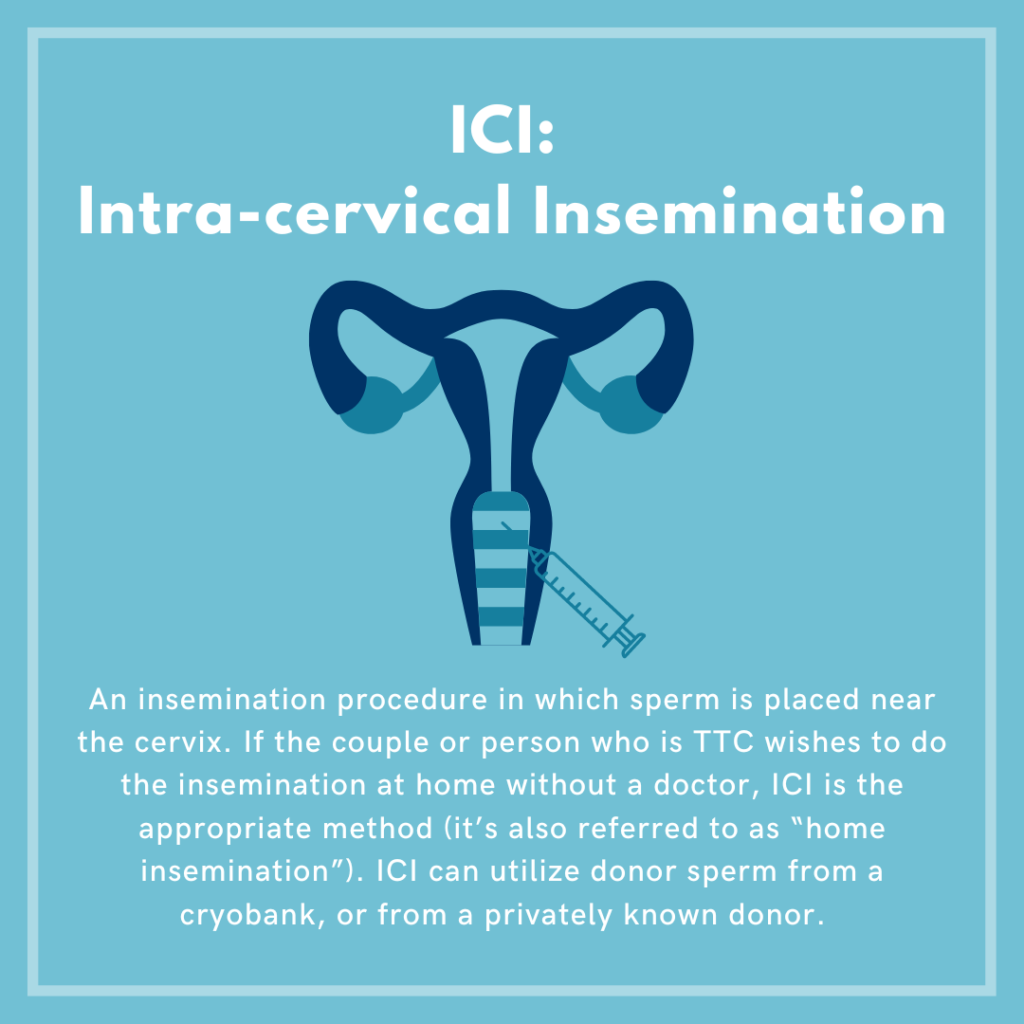
ICI: Intra-cervical insemination
An insemination procedure in which sperm is placed near the cervix. If the couple or person who is TTC wishes to do the insemination at home without a doctor, ICI is the appropriate method (it’s also referred to as “home insemination”). ICI can utilize donor sperm from a cryobank, or from a privately known donor.
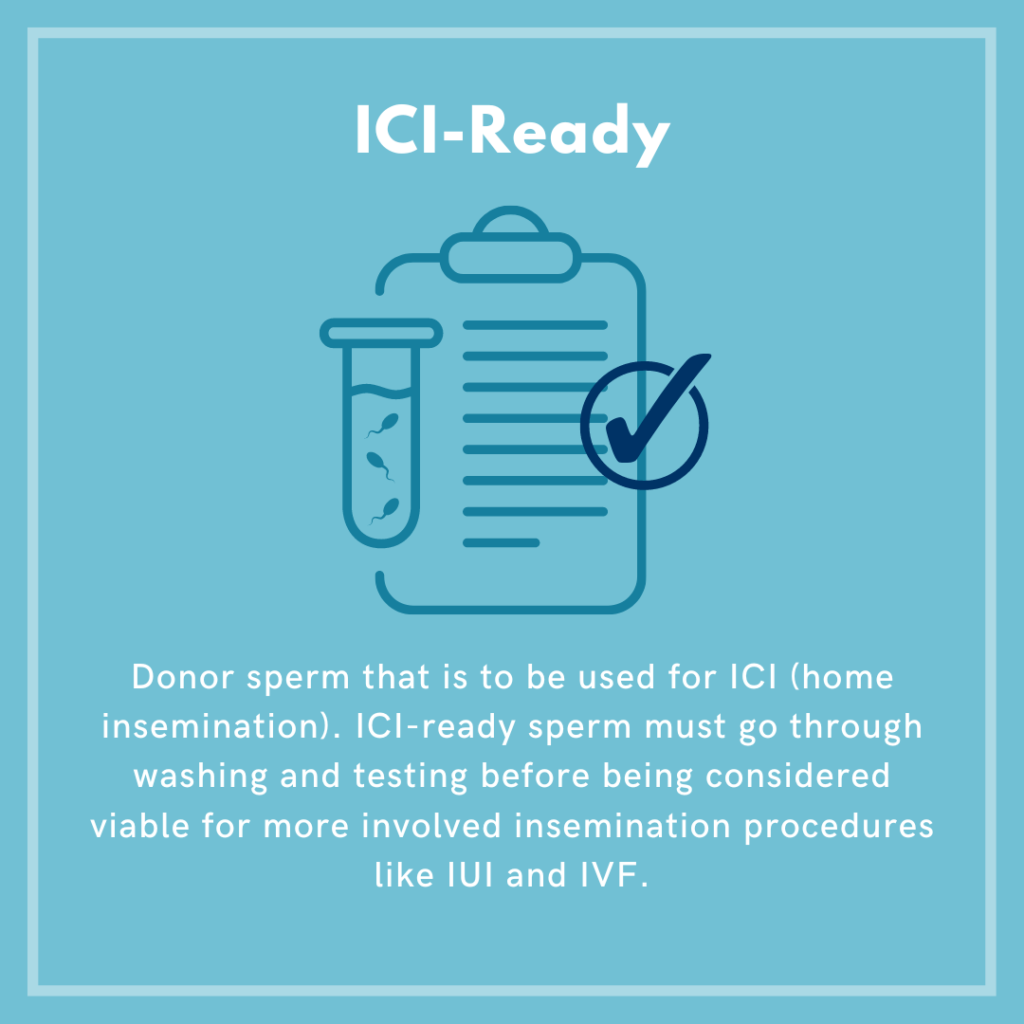
ICI-ready
Donor sperm that is to be used for ICI (home insemination). ICI-ready sperm must go through washing and testing before being considered viable for more involved insemination procedures like IUI and IVF.
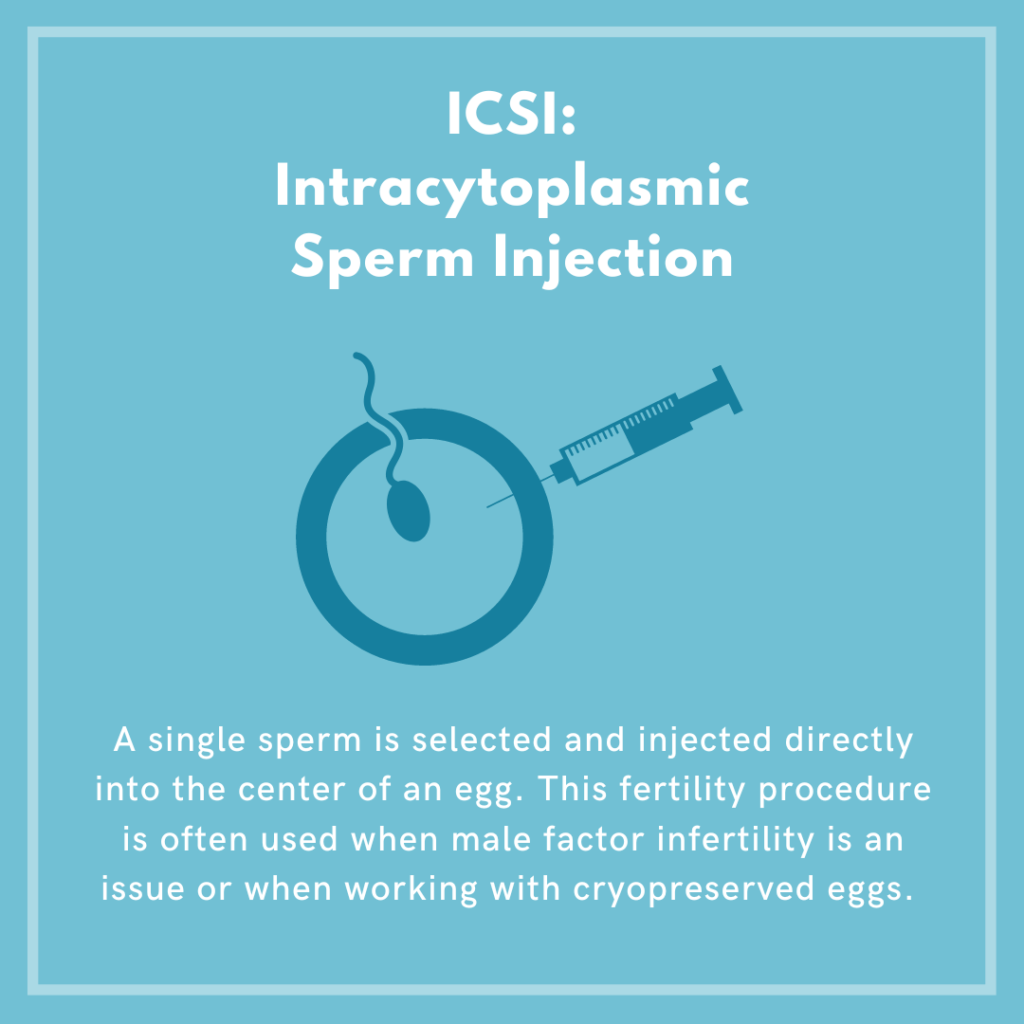
ICSI: Intracytoplasmic sperm injection
A single sperm is selected and injected directly into the center of an egg. This fertility procedure is often used when male factor infertility is an issue or when working with cryopreserved eggs.

ITI: Intratubal insemination
Pre-washed sperm are placed directly into the fallopian tube in this procedure, sometimes using a catheter that threads through the cervix and uterus to reach the tubes, other times using a laparoscopic surgical procedure to access the tubes. ITI has a higher rate of complications that IUI and thus is less commonly used.

IUI: Intrauterine insemination
An in-office insemination procedure in which a doctor places sperm directly into the uterus.

IUI-ready: Intrauterine insemination ready
IUI-ready sperm have been washed and are thus appropriate for IUI (unlike ICI-ready sperm, which are not washed).
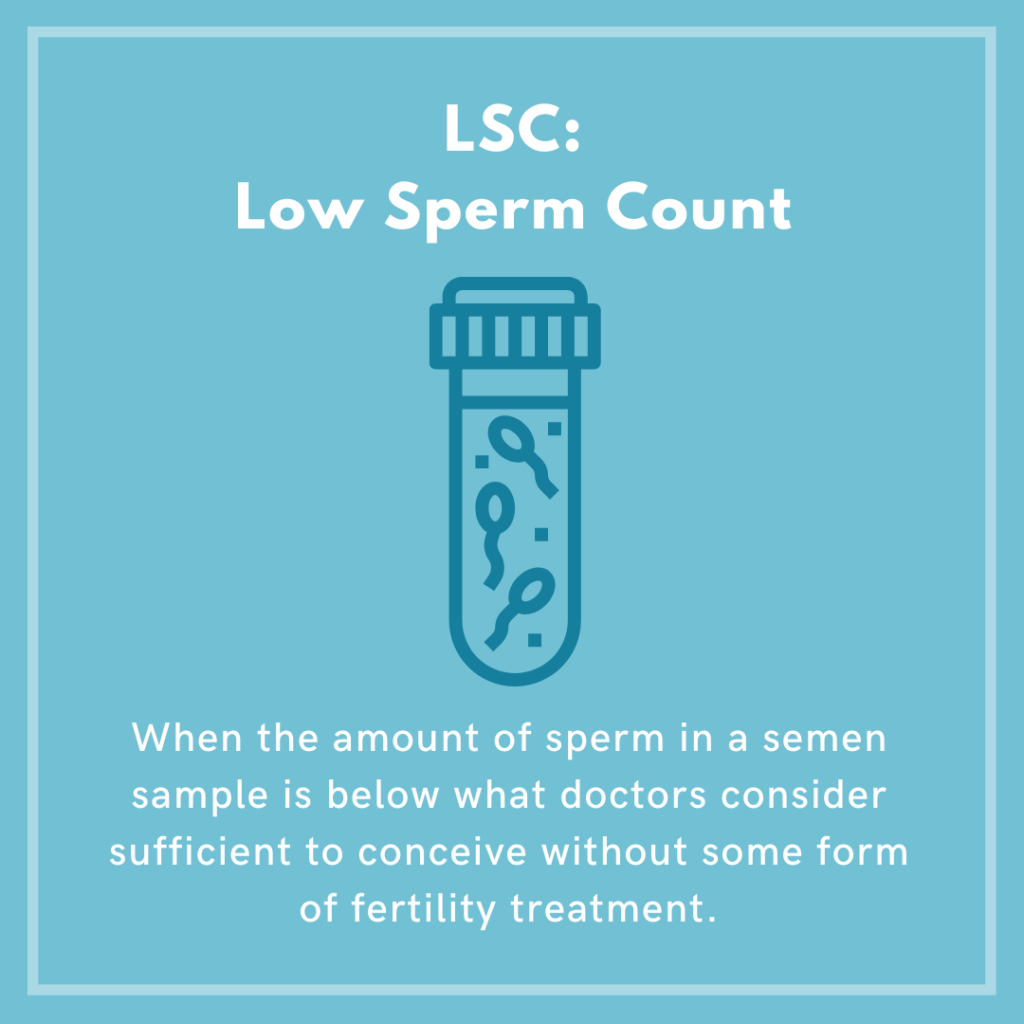
LSC: Low sperm count
When the amount of sperm in a semen sample is below what doctors consider sufficient to conceive without some form of fertility treatment.
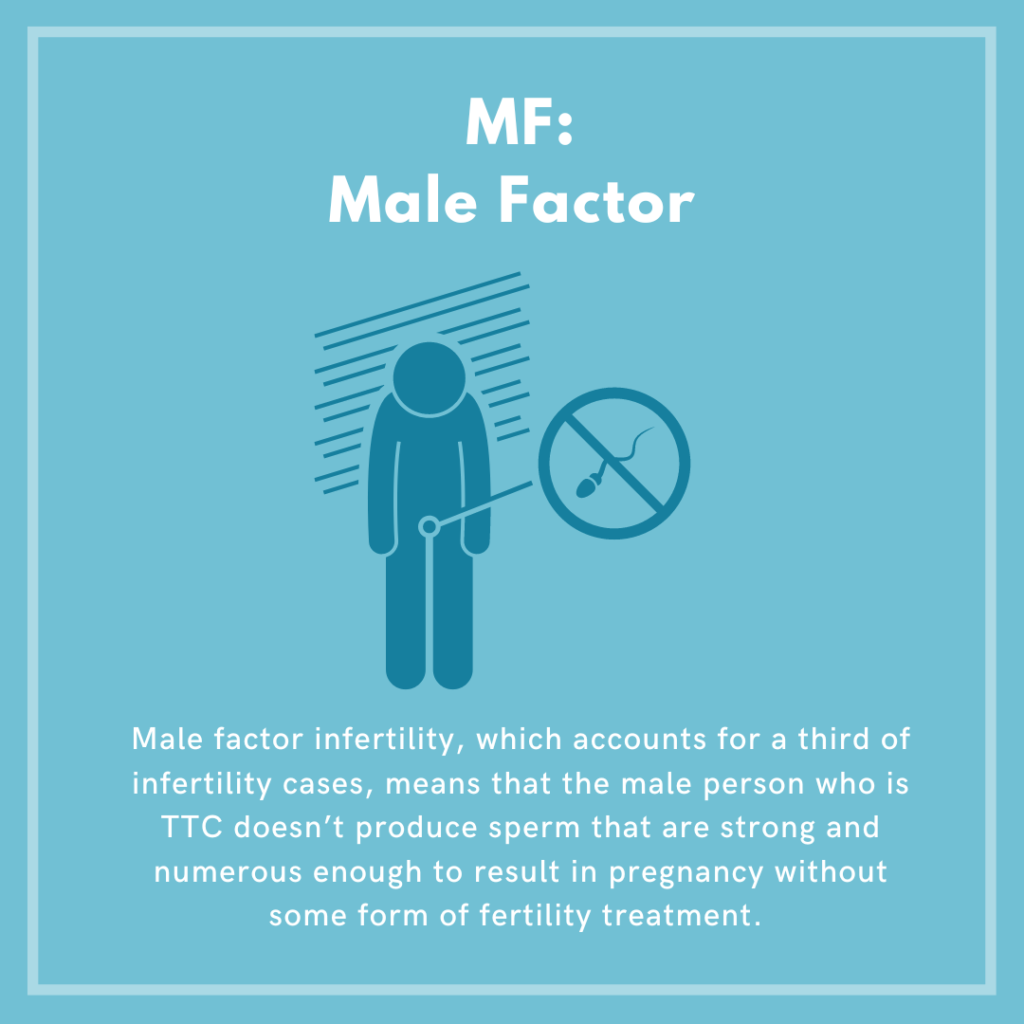
MF: Male factor
Male factor infertility, which accounts for a third of infertility cases, means that the male person who is TTC doesn’t produce sperm that are strong and numerous enough to result in pregnancy without some form of fertility treatment.

SA: Semen analysis
Semen is tested for Ph levels, sperm count, and the morphology and motility of the sperm it contains. SA gives a couple or person who is TTC an estimate of their chances of conceiving without fertility treatment and gives their doctor a sense of what kind of ART will best help them achieve pregnancy.
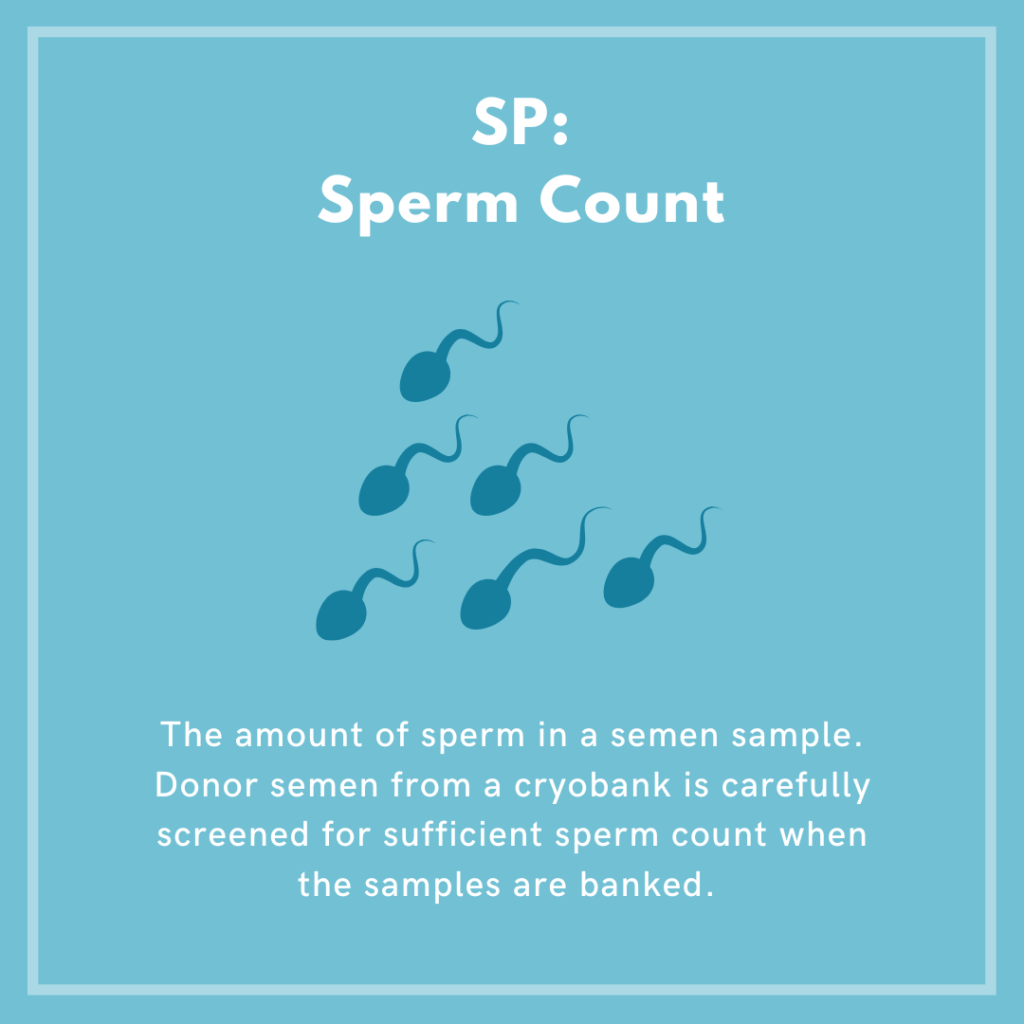
SP: Sperm count
The amount of sperm in a semen sample. Donor semen from a cryobank is carefully screened for sufficient sperm count when the samples are banked.
This list is far from exhaustive, and many online fertility and TTC forums have their own “dialects” of TTC slang, but it’s a great start to your fertility literacy journey. Even if you can’t yet tell your IVFs from your IUIs, don’t worry—like any language, immersion goes a long way in getting familiar with the vocabulary. Before you know it, you’ll be the one patiently explaining terms to wide-eyed newcomers.







